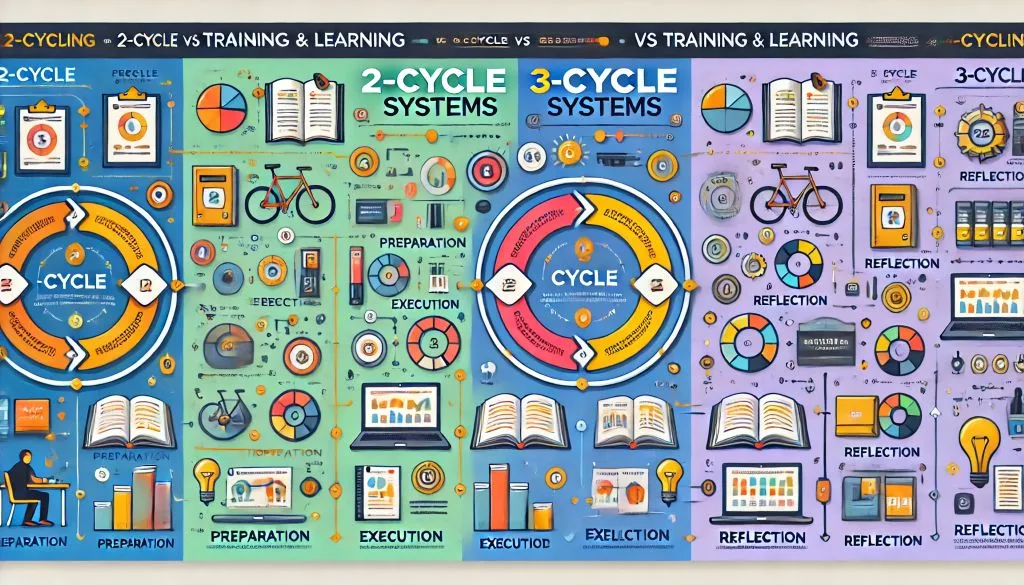Hey everyone! Today, I’m excited to discuss a fascinating yet often confusing topic—2-cycle vs. 3-cycle! These concepts pop up in various aspects of life, especially in fitness, sports, and study rhythms. Let’s dive deep into the differences, suitable scenarios, and my personal experiences!
1. What are 2-Cycle and 3-Cycle?
- 2-Cycle: As the name suggests, this refers to an activity or process that is divided into two main phases. For instance, in fitness, it could be a combination of “strength training + aerobic exercises.” The rhythm here is simpler than the 3-cycle, making it easier to manage.
- 3-Cycle: This divides activities into three stages, usually consisting of “Pre-Conditioning, Performance Improvement, and Maintenance.” This design is typically more comprehensive and suits situations that require additional variations and challenges.
2. Advantages of 2-Cycle
- Simplicity: The structure is straightforward, making it easy for beginners to grasp.
- Time Management: More flexible time scheduling, fitting well into busy lifestyles.
- Single Focus Goal: Great for activities focused on a single objective, like weight loss or muscle gain.
3. Advantages of 3-Cycle
- Comprehensiveness: Stage-based training and learning cover a wider range of skills, helping with in-depth mastering.
- Sustained Motivation: Different goals at each stage keep things fresh and inspire continued effort.
- Enhanced Adaptability: As progress is made, this method better accommodates bodily changes or psychological states, aiding in long-term commitment.
4. Situational Analysis
- Fitness: If one aims to boost strength quickly, 2-cycle may be the way to go; for those looking for a holistic enhancement of fitness and health, a 3-cycle is the clear winner.
- Learning: A beginner might opt for a 2-cycle approach when learning a new skill; however, for complex concepts, a 3-cycle strategy helps in gradually deepening understanding.
- Work Planning: In professional development, 2-cycle goals are easier to execute, while a 3-cycle approach will aid in setting long-term career growth objectives.
5. My Personal Experience
During my fitness journey, I’ve dabbled in both cycles. Initially, I employed a 2-cycle approach, focusing solely on strength and specific aerobic movements. While I saw short-term results, I felt my body could elevate further! Eventually, I switched to the 3-cycle method, incorporating flexibility in the pre-conditioning phase and introducing various techniques, leading to even greater results and noticeable progress.
This journey highlighted that selecting the right cycle can significantly enhance one’s pursuit of goals.
Conclusion
In summary, both 2-cycle and 3-cycle have their unique advantages and disadvantages; choosing the right one largely depends on individual needs and goals. I hope this little sharing helps you make informed decisions and create an efficient training and study plan tailored to you!
